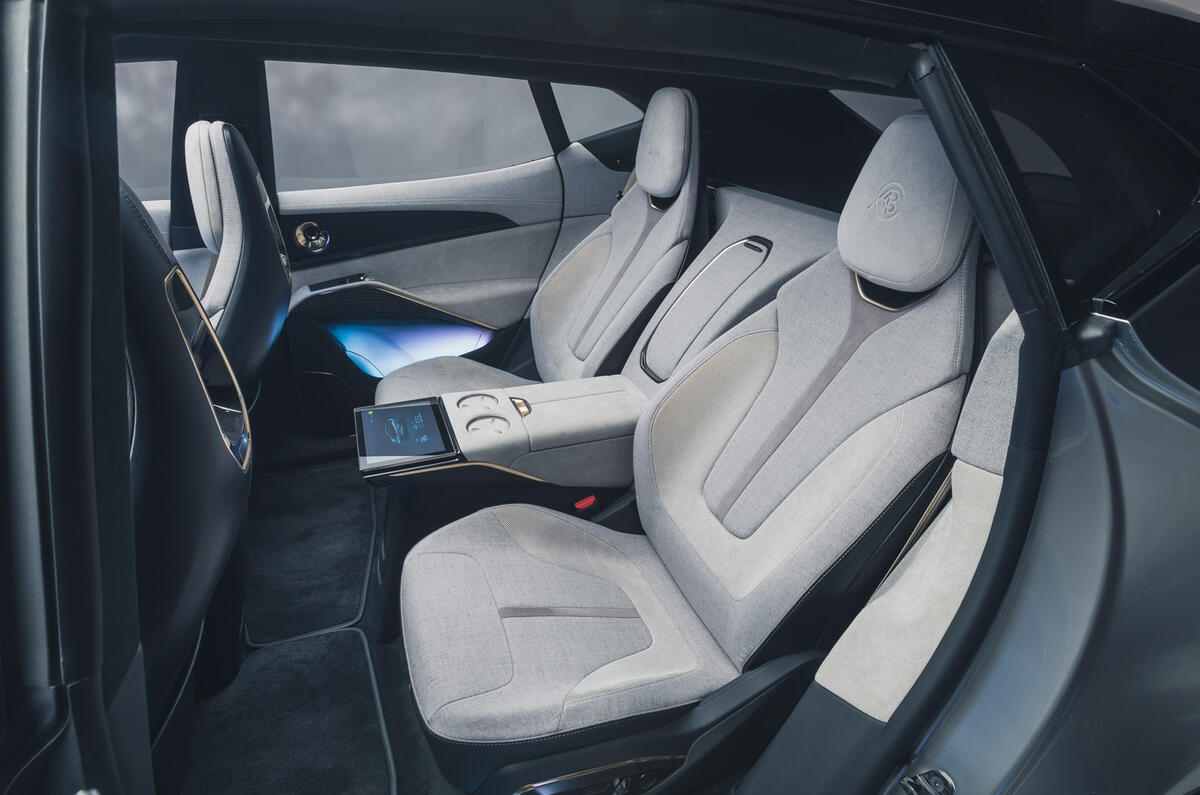Brands all new 600bhp fully electric Hyper-SUV
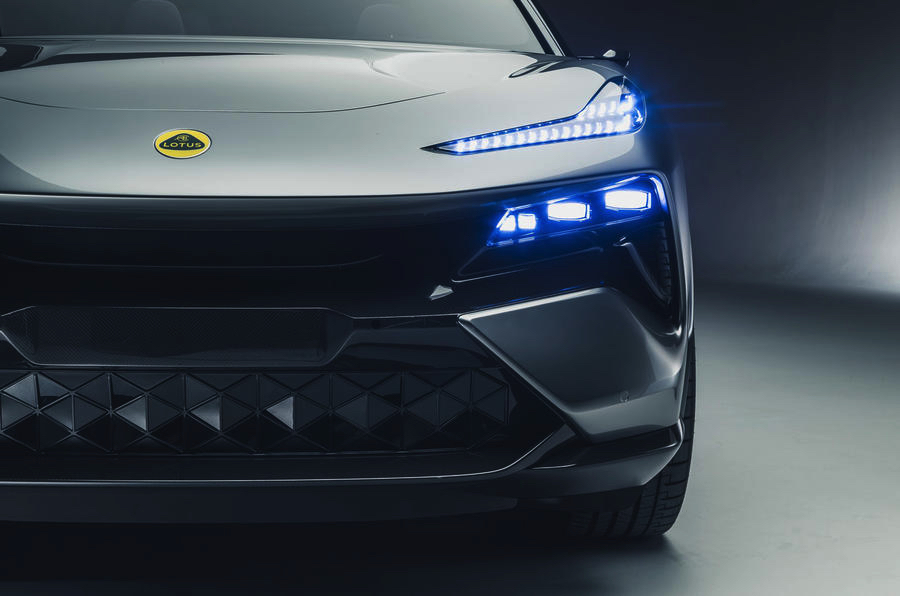
‘The world’s first electric Hyper-SUV’ is here, the all new Lotus Eletre, a bold, progressive and exotic 600bhp Urus sized SUV, with iconic sports car DNA, aimed at the next generation of Lotus customers.
First of three new Lotus lifestyle EVs in next four years, with design language inspired by world’s first British EV hypercar, the award-winning Lotus Evija.
No Confirmed technical figures are available yet, but Lotus says the target is a top speed of 162mph and a sub-3.0sec time for the 0-62mph sprint, not bad for a weight north of 2.2 tonnes.
Every Eletre will have a battery capacity of more than 100kWh and power upwards of 592bhp. Maximum range is 348 miles and a full recharge will be possible in 18 minutes from a 350kW charger.
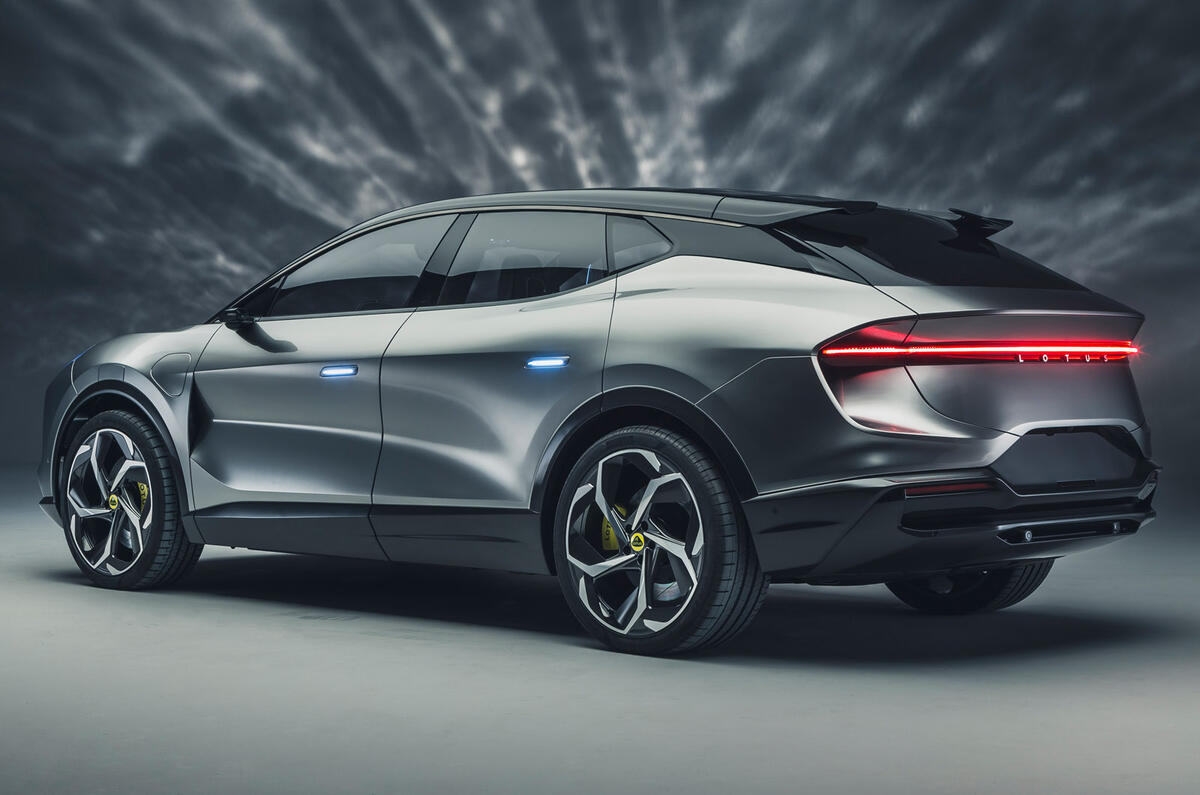
The Design of the Lotus Eletre has been led by Ben Payne, at the Lotus Technology Creative Centre (LTCC) in Coventry, Warwickshire. The ‘carved by air’ design ethos which inspired the Evija and Emira is immediately obvious. His team has created a daring and dramatic new model with a cab-forward stance, long wheelbase and very short overhangs front and rear. Creative freedom comes from the absence of a petrol engine under the bonnet, while the short bonnet echoes the styling cues of Lotus’ iconic mid-engine layout. Overall, there’s a visual lightness to the car, creating the impression of a high-riding sports car rather than an SUV. The Eletre’s feature line is given the bold leading edge of the bonnet which continues round into the front wing, wheel arch and ultimately the length of the vehicle.
A signature element of the design is its ‘porosity’ – the aerodynamic principle of air flowing through the car as well as under, over and around it. Porosity was at the heart of the Evija’s design, is integral to the Emira, and has provided clear inspiration for the Eletre. It is most obvious where air is channeled under the leading edge of the car, emerging through two exit vents in the bonnet above. There are other examples ahead of and behind the front wheel arches, behind the rear wheels, and even at the top of the D-pillar. The benefits being less resistance in cutting through the air, delivering a more efficient journey in terms of improved vehicle range, speed and performance.
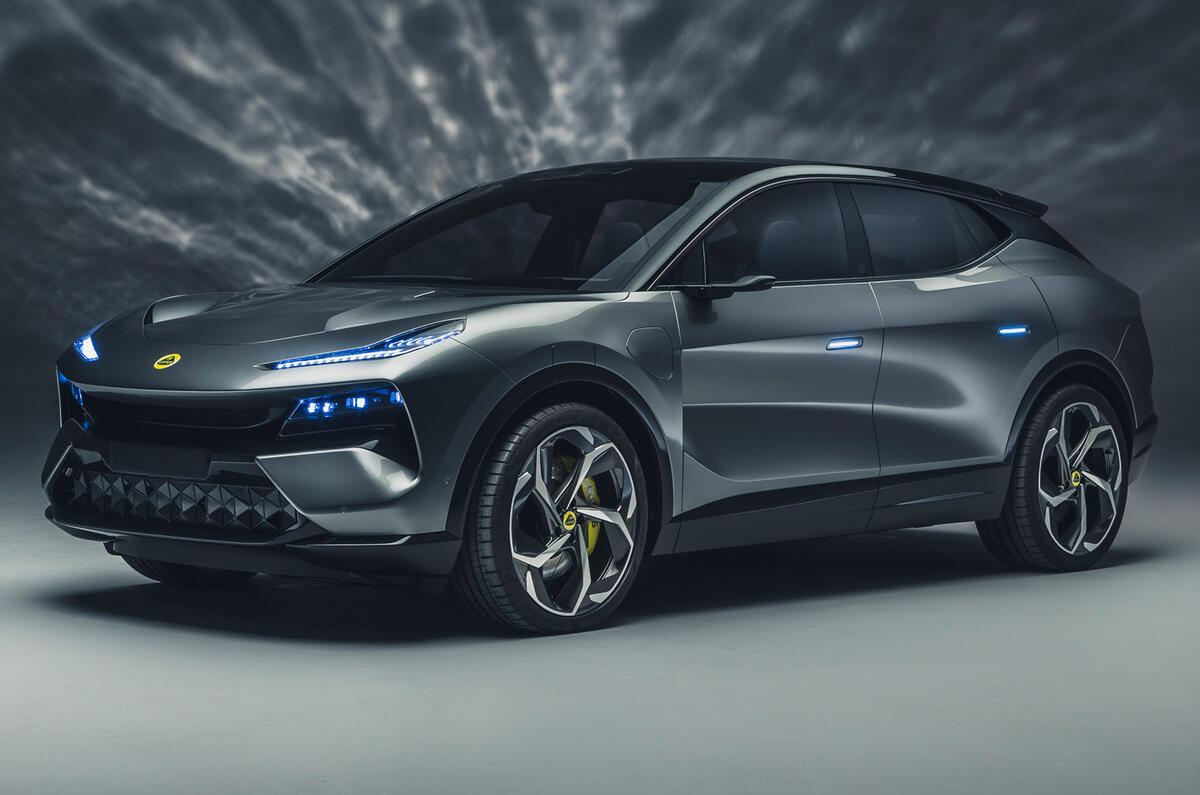
At the front of the Eletre are sharp and crisp leading edge which gives a nod to the lineage with the Emira and Evija. It draws a distinct line across the very striking and contemporary design treatment below.
Just above the leading edge are very thin and methodical light clusters which house the Daytime Running Lights and scrolling directional indicators. The main lamps, which are available with matrix technology to permit constant high beam use without affecting oncoming traffic, are housed below, recessed and partially hidden.
Lower down is the Eletre’s active front grille, a network of interconnecting triangular petals that dominate the central section, these remain closed when the car is at rest or when there’s a need to reduce drag during driving. They open in a distinctive pattern to feed air into the radiator, allowing the Eletre to ‘breathe’ when cooling of the electric motors, battery pack and front brakes is required
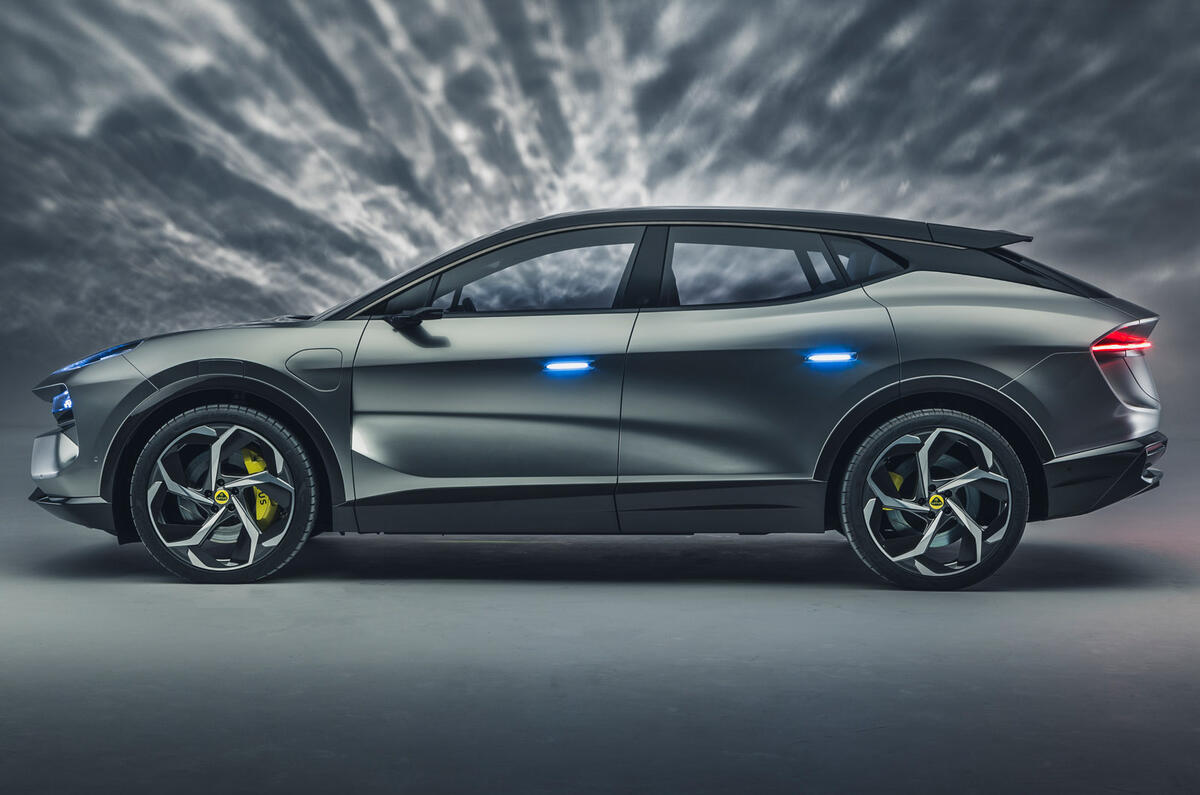
Moving round the car, each door mirror is replaced by an Electric Reverse Mirror Display (ERMD), which houses three different cameras, one for the rear-view mirror, a second to help create a 360-degree view of the car from above to aid parking, and a third that’s part of the intelligent driving technologies. It works in tandem with the Eletre’s LIDAR system to deliver autonomous driving capability. The air outlet immediately behind the front wheels outlines the sculpted shape of the doors, each of which has a flush handle. The electrically opening cover for the charging port is fitted in the front wing, as are the deployable LIDAR sensors, one on each side and a world-first technology for the Eletre.
The car rides on 23-inch machine-cut split-finish five-spoke alloys with carbon fibre inserts to aid air flow and ceramic composite 10-piston caliper brakes.
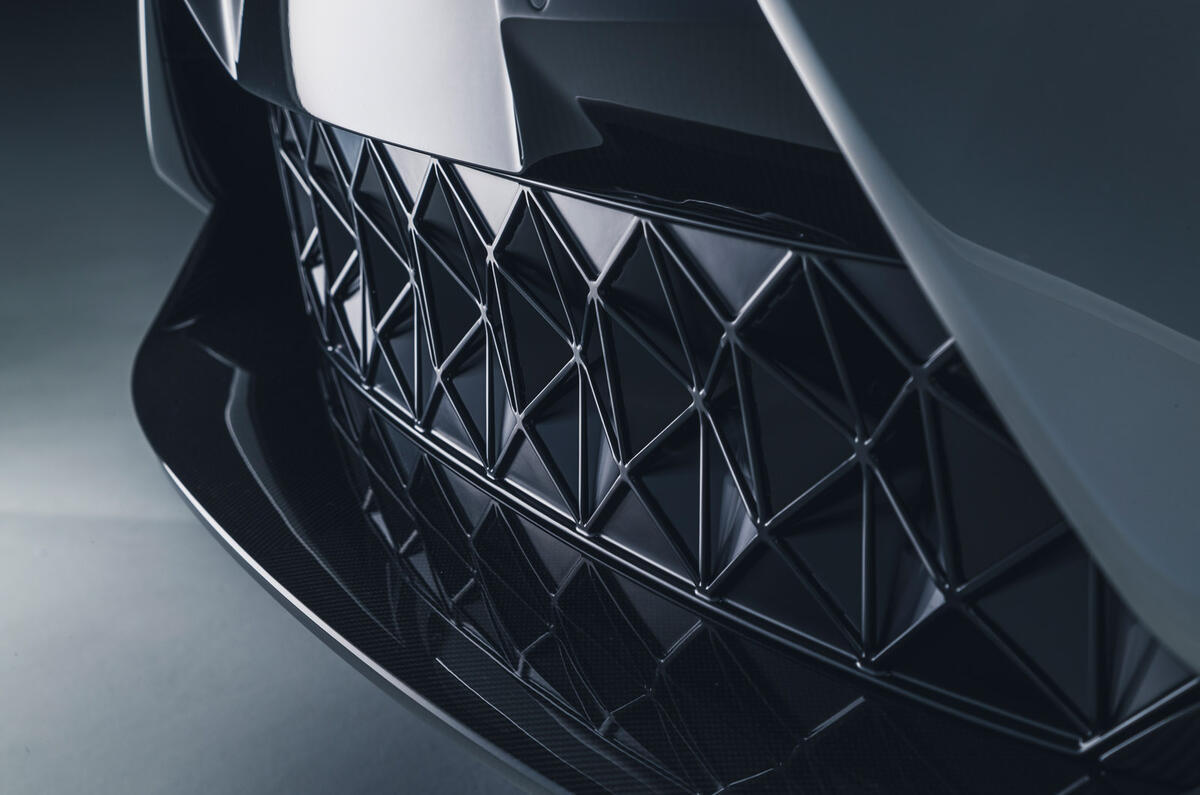
At the rear the first notice is a full-width ribbon light strip which is red whilst moving, picks up the feature line from the profile. Situated just above the Lotus wordmark, includes a scrolling directional indicator at each end, another design cue which echoes both the Emira and Evija. The light can appear in four colours, playing a role in the car’s theatrical unlocking sequence and indicating battery charge status.
The rear also features the unique cantilevered carbon fibre ‘floating’ split roof spoiler, a motorsport-inspired design feature that evokes race car winglets. With the central section removed weight is saved – a very Lotus concept – and allows the LIDAR sensor to be integrated at the top of the glass. Optimized for exceptional aerodynamics, the roof spoiler channels airflow down the glass and into the active tailgate spoiler which is deployed automatically at speed. It has three distinct deployment angles, depending on the drive mode selected.
All the black components are finished in carbon fibre while the body panels are aluminum.
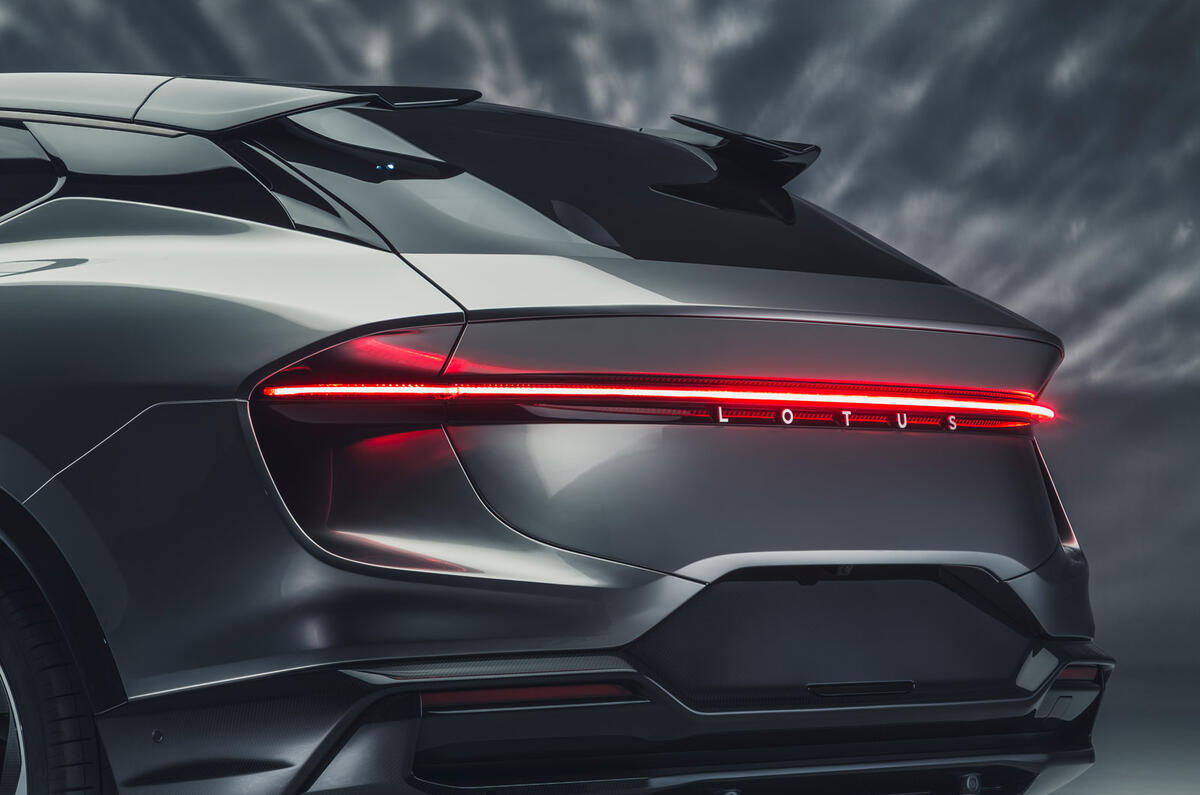
The Eletre takes Lotus interiors and infotainment to an unprecedented new level and sets new standards in the automotive world. The performance-oriented and technical design is visually lightweight, Shown with four individual seats, available to customers alongside the more traditional five-seat layout. A fixed panoramic glass sunroof adds to the bright and spacious feeling inside.
Sustainability has been a primary focus of the design team, working with leading supplier Kvadrat on material choices. The use of premium feel and highly durable microfibres on the primary touchpoints, and an superior wool-blend fabric on the seats which is 50% lighter than traditional leather, allowing for further weight reduction.
The driver-focused cockpit and high centre console are inspired by the Lotus Emira and Evija, The layering of materials and textures creates a truly first-class feel, supplemented the triangular theme seen externally on the car’s active front grille
There is a variety of practical storage space in the cabin. The centre console includes a storage tray with wireless charging for mobile phones, as well as twin cupholders of different sizes which sit flush to the surface until they’re needed. The beautifully sculpted door design includes storage that will take a litre bottle.
The smart design is continued in the rear of the car, with space in the doors and between the two chairs. There is a central draw at knee height and the armrest splits behind the two cupholders. It ends in an angled nine-inch touch-screen for infotainment, with a wireless charging tray beneath.
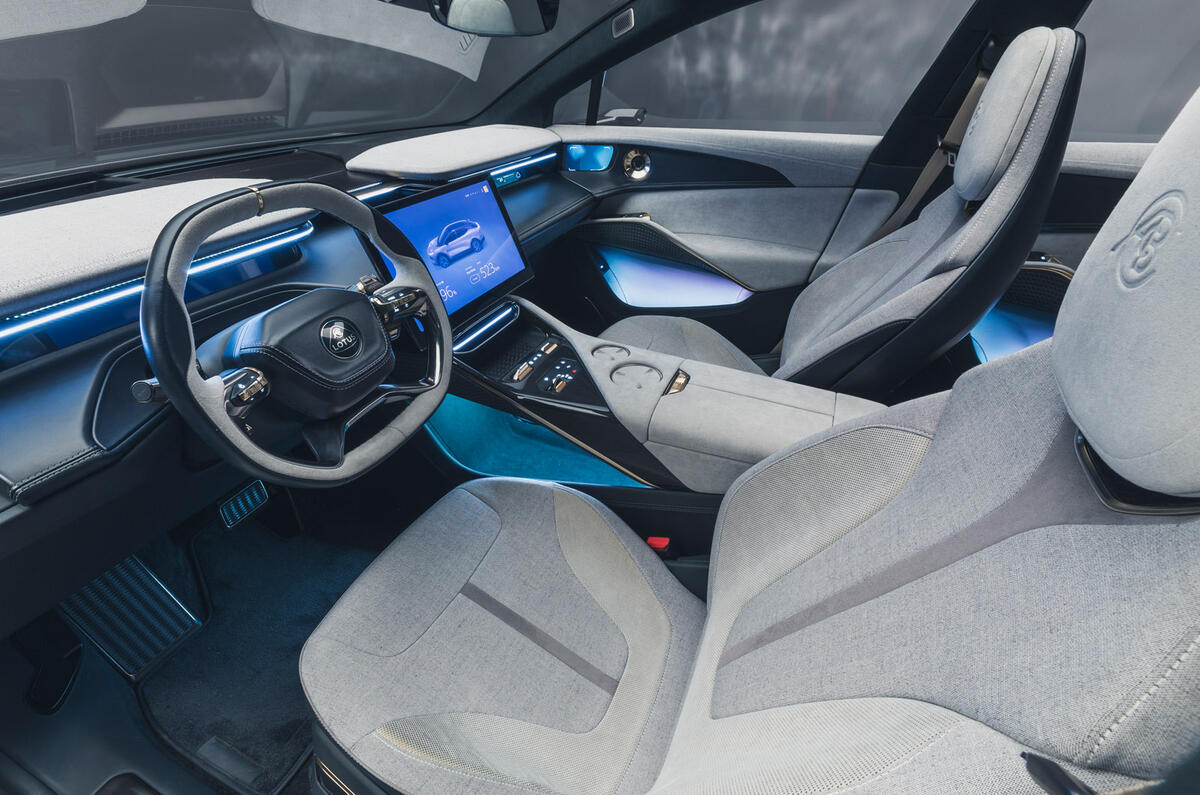
A collaboration between the design team in Warwickshire and the Lotus team in China, who have huge experience in the fields of User Interface and User Experience has given a pioneering and innovative experience.
Below the instrument panel a blade of light runs across the cabin, sitting in a ribbed channel that widens at each end to create the air vents. While it appears to be floating, the light is more than decorative and forms part of the human machine interface (HMI). It changes colour to communicate with occupants, for example, if a phone call is received, if the cabin temperature is changed, or to reflect the vehicle’s battery charge status.
Below the light is a ‘ribbon of technology’ which provides the front seat occupants with information. Ahead of the driver the traditional instrument cluster binnacle has been reduced to a slim strip less than 30mm high to communicate key vehicle and journey information. It’s repeated on the passenger side, where different information can be displayed, for example, music selection or nearby points of interest. Between the two is the latest in OLED touch-screen technology, a 15.1-inch landscape interface which provides access to the car’s advanced infotainment system. It automatically folds flat when not required. Information can also be displayed to the driver via a head-up display featuring augmented reality (AR) technology, which is standard equipment on the car.
The standard audio system on the car is provided by British brand KEF. Called KEF Premium, it is a 1,380-watt 15-speaker set-up with Uni-QTM and surround sound technology. Customers can upgrade to KEF Reference, a 2,160-watt 23-speaker system with Uni-Q and 3D surround sound technology.
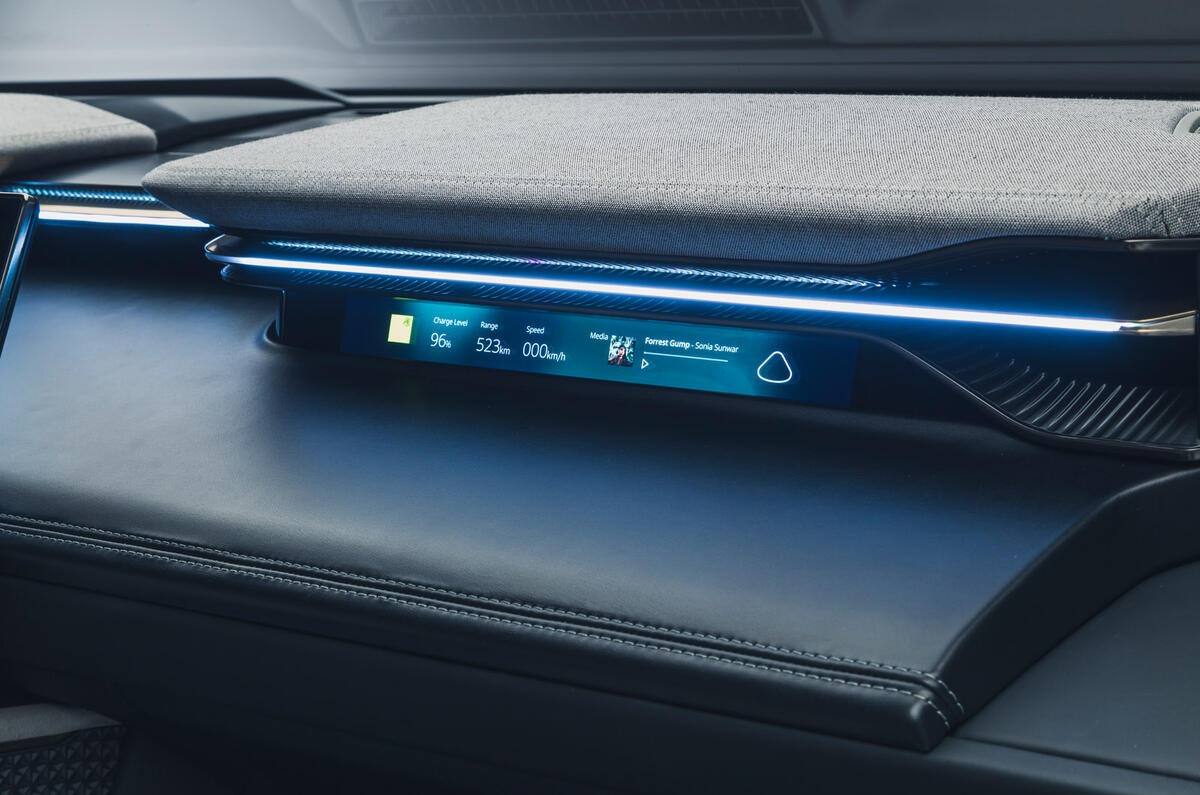
Customers deliveries are expected to start in 2023, at a price starting at just under £100,000.
